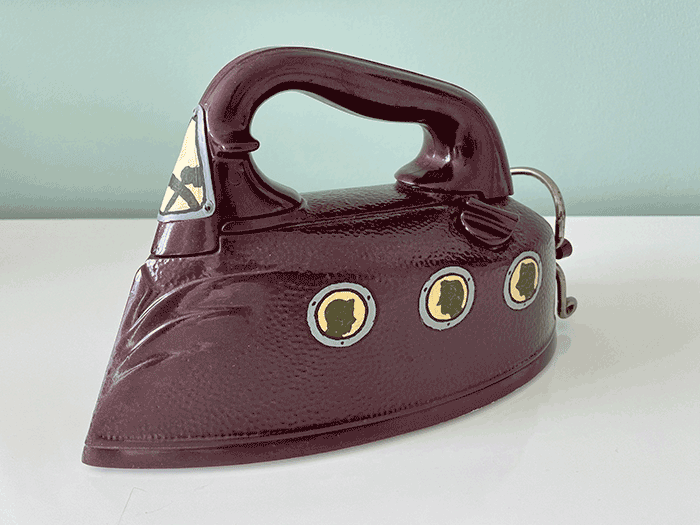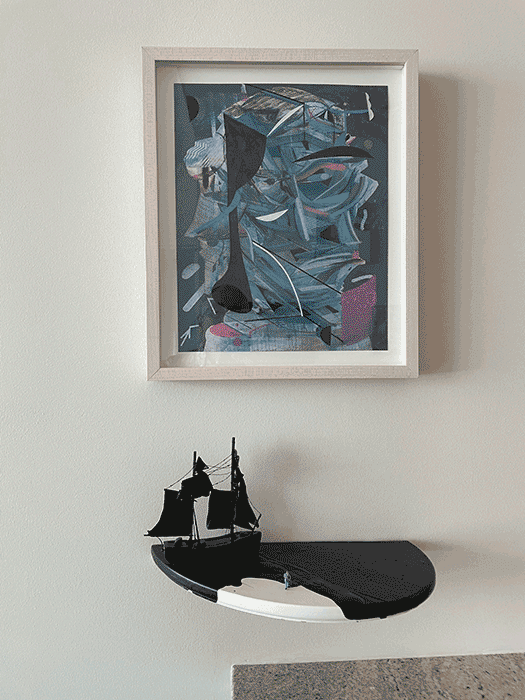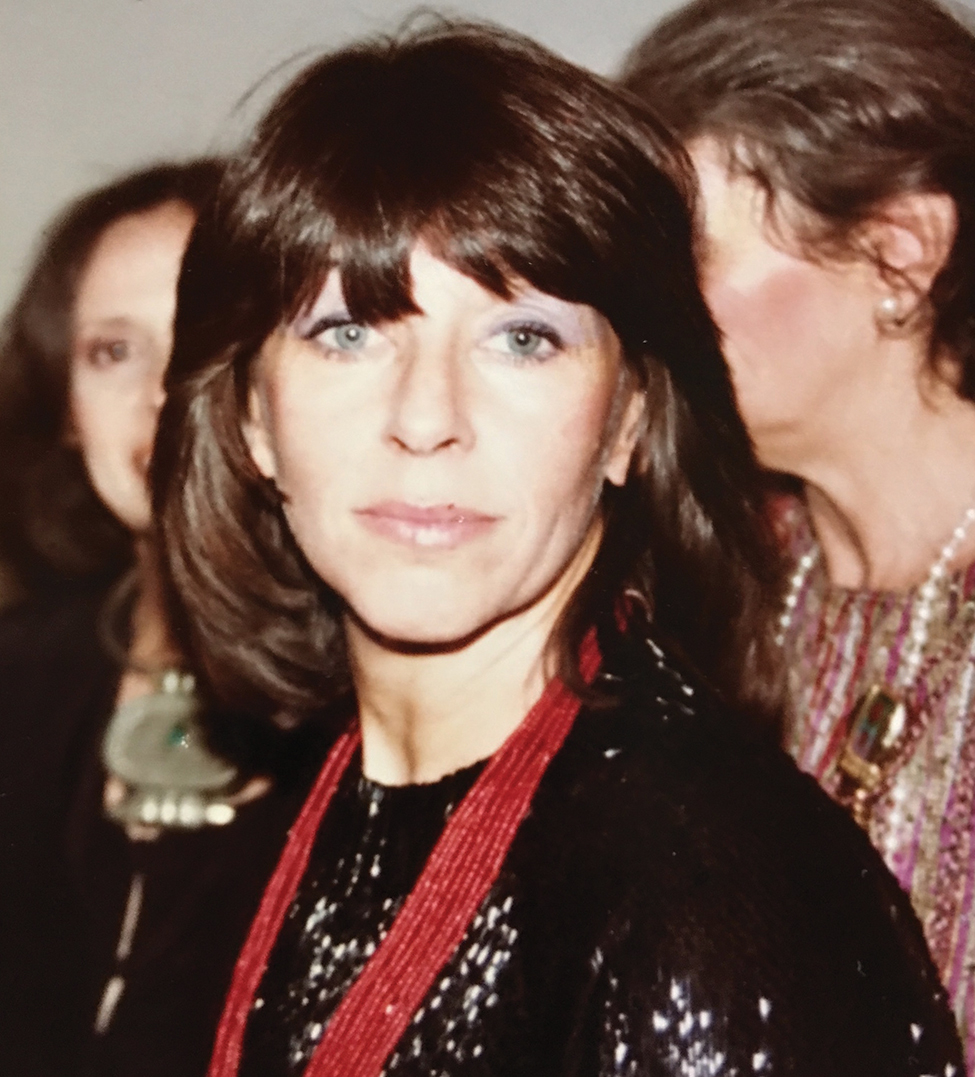Vibrant Art Enlivens a Home: Collectors Gary Metzner and Scott Johnson

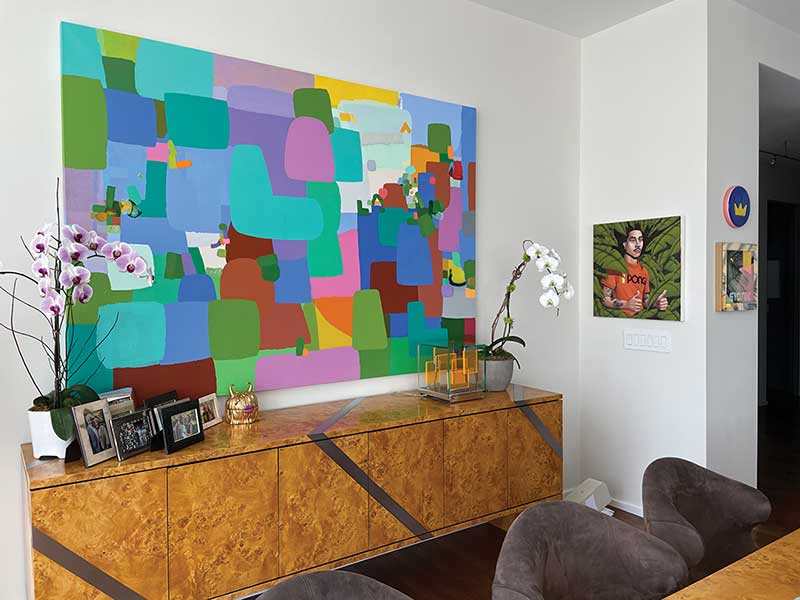
By GINNY VAN ALYEA
Visiting the home of an art collector has, for me, always been a very personal as well as in-person endeavor. Requesting that someone let me invade their privacy and ask that they divulge what they buy, from where, and why, is an intimate thing – one I feel better about doing face-to-face, in order to find out what collecting art is like for Chicagoans, as well as to show how it is never the same thing for anyone.
This past year has taught me to rethink how I do a lot of things, and collector interviews have not been spared the increased distance that so many of us have experienced. But clearing hurdles has meant meeting opportunities.
Despite the apparent challenges, connecting with collectors Gary Metzner and Scott Johnson was a pandemic delight. Already Zoom experts, having attended dozens of art events virtually for a year, Gary and Scott and I met from our respective homes and offices, sharing screenshots and Instagram stories to keep the interview going in a way that would not have happened previously. It also allowed me to sit with and study Gary and Scott’s collection for a couple of weeks, enjoying it fully and for repeat visits. While this interview format may not be needed forever, I was surprisingly grateful for it this spring.
*
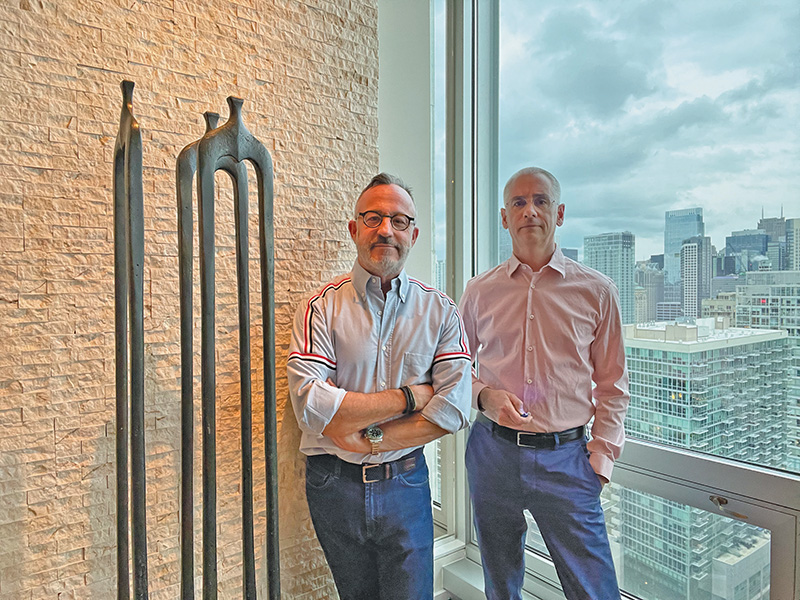
Gary and Scott’s fondness for color is apparent in their home and their art collection. An abundance of saturated, modern hues – which touch most surfaces in their three bedroom River North condo they’ve inhabited for 15 years – dominates a variety of objects, from the orchids, to the linens, to the art. In particular they both love orange. Bold pigment serves as bait, luring the couple to the thing they first admire and then get hooked on, while unifying their taste and lending a vibrancy and sense of fun to the space.
Amidst all the first-impression giving colors, I notice a range of artwork and mediums on display in each room, from mid-career contemporary artists who are Chicago-based, to those with international profiles: constructions by Theaster Gates and Nate Young, a text painting by Mel Bochner, an edition of America: A Hymnal by Bethany Collins, photographic portraits by Ayana Jackson, Ian Michael, Hellen van Meene, and Carrie Schneider, among others. Quite a bit of sculpture – pieces by Neil Goodman, Chris Garafalo and Kennedy Yanko – and ceramics, not to mention artist books, are also placed on nearly every available surface.
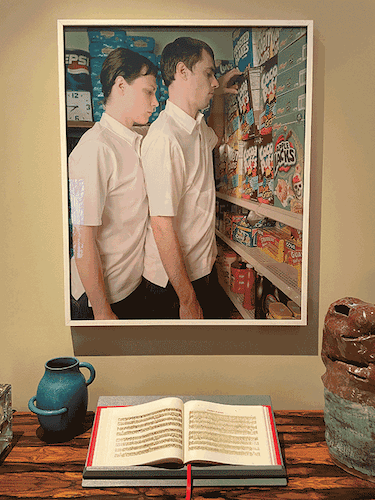
Though the walls are not yet full, the art, particularly smaller works, has tripped onto tables and sideboards, floating shelves and nightstands. I can imagine reaching for a drink and picking up a four-inch wire sculpture instead, or looking into a corner to discover a glazed piece by Anders Herwald Ruhwald. If I need to iron a shirt, perhaps I can borrow (kidding) a Roger Brown painted 1930s iron, featuring ship passengers visible through yellow-lit portals. I realize a guest can’t see, or appreciate, all the art in a single visit.
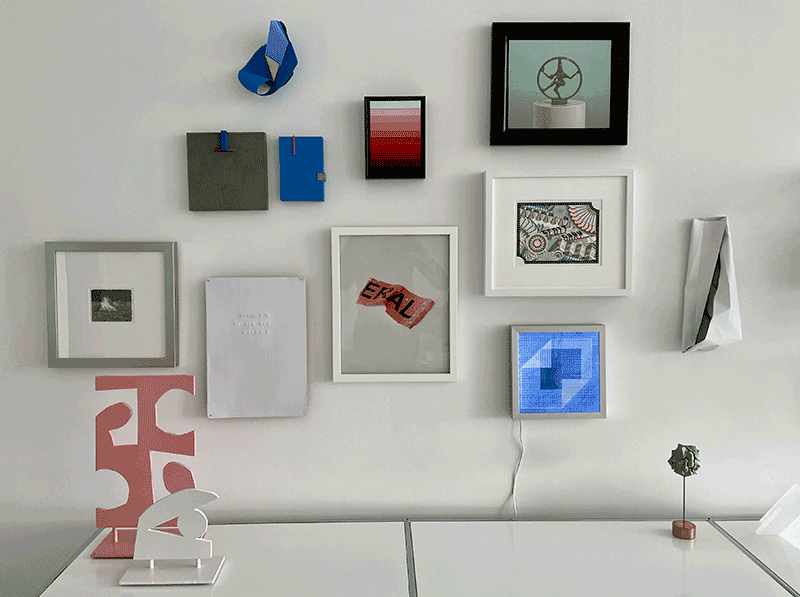
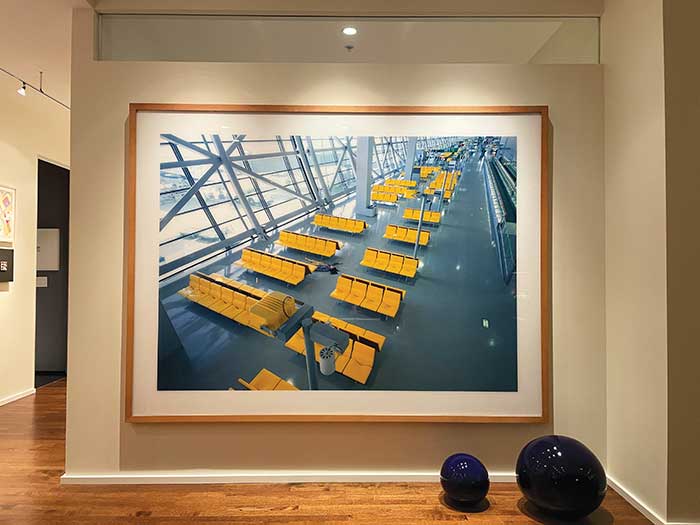
I asked Gary to give me an idea of the scope and scale of the collection, as I was interested in just how many pieces they had acquired to date and if they considered a focus for their lively assemblage.
“We should be a bit more organized,” Gary admits. “We have every invoice of every piece we ever purchased, but we just never made one of those lists for when people come over. It’s taken us a while to think of ourselves as collectors.”
Gary and Scott’s reluctance to admit they are collectors sounds familiar. One by one works of art are purchased and then carefully installed. Invoices are filed, and eventually careers are followed, museum donations are made and gifts are promised. Yet many resist the designation of ‘collector.’ It sounds so obligatory. Gary estimates they now have about 80 works in their condominium – he suspects they may be out of room – with another 32 in his Gold Coast office, where he is the head of Sotheby’s Chicago location.
Yes, they are definitely collectors.
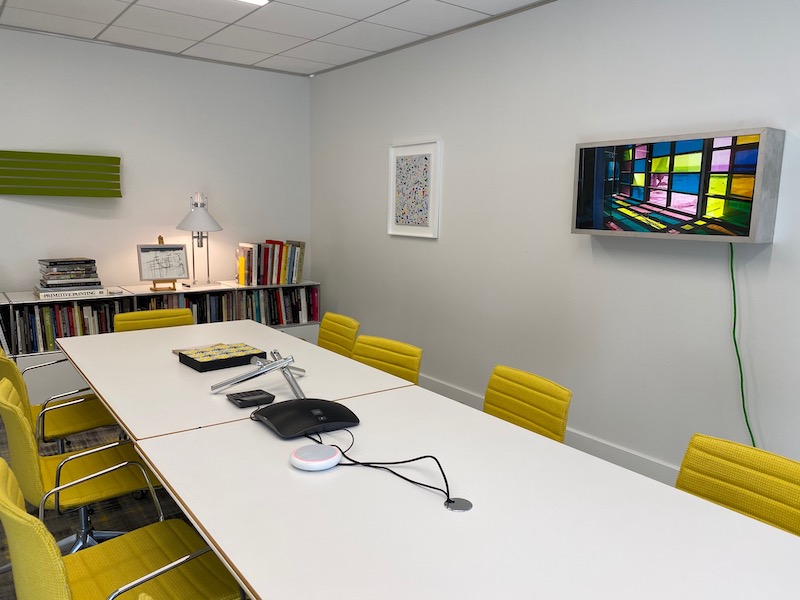
Gary explains that his very first personal purchase was when he was just ten years old. Having saved some money, he tagged along with his art loving parents at the Beth-El Synagogue Art Fair, found something priced under $500 and convinced his parents he would pay them back the difference. This piece, a 1920’s Belgian poster, was purchased from a dealer Gary would later do business with.
Having more or less been a part of the professional art world since he was in graduate school, Gary remembers that on a trip to New York in 1986 – with Lori Kaufman, a great friend and mentor and part of Hokin Kaufman Gallery, where he had his first art world job – he went to visit Marlborough Gallery. It was there he pointedly asked what he could afford, and was told he could buy two Alex Katz prints for $300 each, unframed.
He bought them on the spot and still has them on display today.
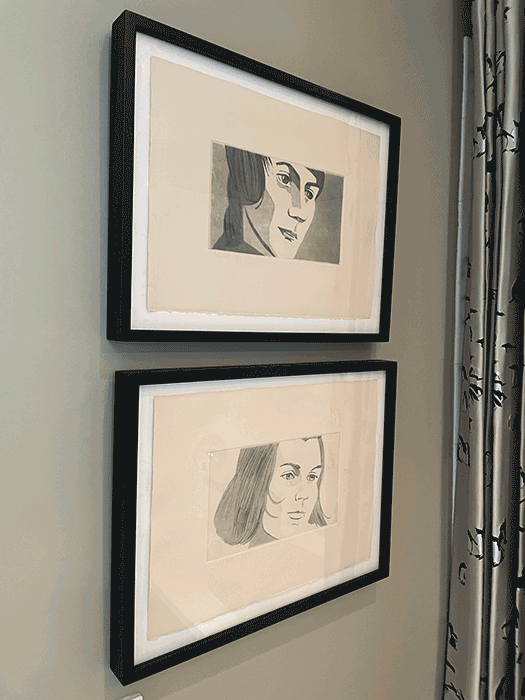
*
Scott and Gary began buying art together years ago. Though they got their starts in different ways and at separate times, they have jointly amassed a collection of artists with diverse backgrounds, and they enjoy keeping things varied. As a couple they have adhered to the sage advice to buy what they like, and they have come to enjoy the communal nature of collecting art, soliciting suggestions from colleagues, curators, and advisors. While Gary’s auction background means he is often giving advice to clients, he and Scott rely on shared insights and often check out galleries or auctions to see what might catch their eye next.
Scott recalls he has always loved art and he has regularly visited museums around the country ever since he was young. When he began working at the University of Chicago hospital, following graduate school in Boston, and was commuting to Hyde Park from the North Side, he says he was living near art rather than with it. For awhile he was focused only on starting out in an intense career that left little time for anything else. It took meeting Gary to really introduce him to the art world in Chicago.
While one was the first to bring the other along, today they both cite local museums as doing an incredible job helping them learn about art. The couple spent their 20’s regularly visiting the Smart Museum in Hyde Park, and today they are formally supportive of most of the museums in the city. They credit these museums, and other area spaces, with hosting high-quality, amazing programming even during the pandemic, something they appreciate as a great source of information as well as activity when they could not be together in person with other collectors and artists.
In return for what they’ve learned from these institutions, they also actively give back. Gary is on the board of the Driehaus Museum and Depaul Museum of Art, and they are both a part of Emerge at the MCA, as well as the Society of Contemporary Art at the Art Institute of Chicago. This June they will co-chair the Chicago Artist Coalition’s virtual Work-in-Progress benefit.
*
Learning about and acquiring art takes a great deal of time, focus and resources. I wondered if they had sold any works in the collection either to adjust their focus or to make more space at home, and of course I was curious if Gary had sold personal pieces at auction.
“We sell very little,” he says. “I know I sell people’s art for a living. I guess if we finally run out of space and there are artists that have a market to resell, we could, but not all do.”
Charity auctions have been one outlet for deaccessioning while benefitting a good art cause. “We have donated quite a few works this way. It’s a great way to help museums and organizations.” Gary says they have also started to designate some pieces as promised gifts to area museums. He likes that the work will end up being shared with the public some day, but for now they can still enjoy them at home.
For the most part, works stay in the collection. Gary credits his Sotheby’s colleague, Helyn Goldenberg, with encouraging him to make something new work. He shares, “She always says, ‘Don’t worry about space. You will find room if you really like it.’ I don’t know how, but it always seems to work.”
Gary has held a prominent position with Sotheby’s since 1997 (his 25th anniversary at the auction house is this July). Locally he has a reputation for actively supporting galleries. I asked him what he thought about that old sticking point that auctions and galleries are in competition with each other, particularly now that there is more overlap between the two markets, due to the pandemic and the absence of in-person art fairs and large market events.
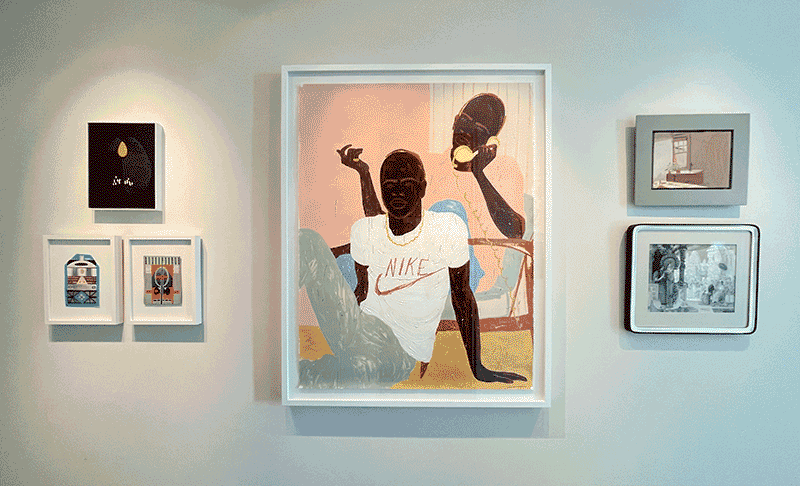
He responds, “I think it’s so important to support the local art scene and galleries in general. They make a huge effort to put on exhibitions. Yes, they are for sale, but the effort going into these shows demands they be seen. Scott and I have spent much of the pandemic going to galleries on Saturdays. It’s been masked and safe, and with museums closed [this winter], it was a great activity to do together. I feel one of the things the pandemic has done was to bring galleries, museums and auction houses together to help each other and collaborate. With all the art fairs on hold, Sotheby’s started the Gallery Network last summer as a place for galleries to sell works online to the Sotheby’s audience. Again, it was a way to help each other.”
When the fairs do come back, it can’t be soon enough. “We have traveled to Miami many times, and we have never missed an EXPO CHICAGO, ever,” says Gary. “Tony Karman is the king of hospitality. I think we have bought something each year. When we attend an art fair outside Chicago, we end up hanging out with our Chicago gallery friends there too, and we usually buy something as well. It sounds funny, but I think it’s because dealers often bring the best works to a fair, now even a virtual fair.”
Clearly art is a social, as well as professional, focus for Scott and Gary, but for now the big art parties are still in the rearview mirror. Gary says it’s hard to recall the last in-person event they went to because they’ve been busy toasting and connecting online. They have also been meeting with co-chairs to plan Chicago Artist Coalition’s June benefit, as well as brainstorm with another area organization to host an event in the fall.
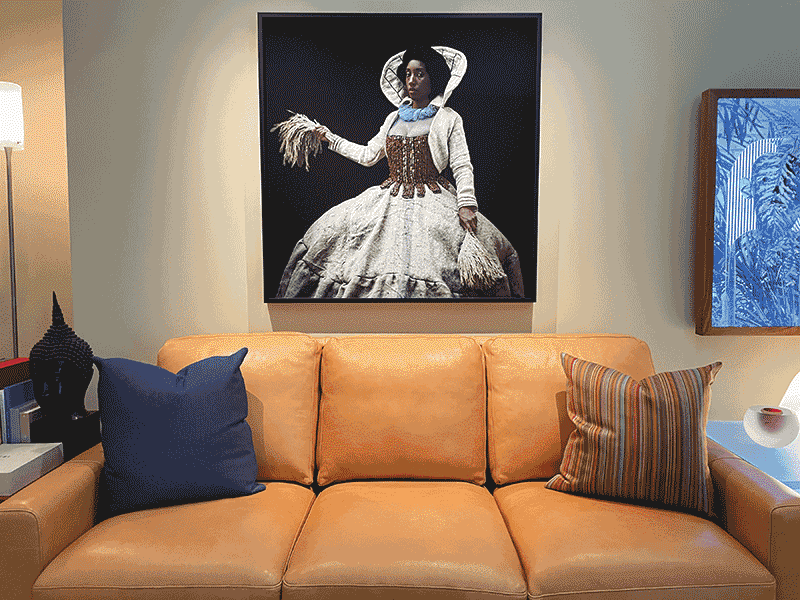
While ready for a return to in-person, they’ve managed to engage well with virtual talks and events. Gary recalls a Zoom talk he and Scott attended where collector and MCA board member Helen Zell spoke with MCA Director Madeleine Grynsztejn last year. Zell said one of the most rewarding things she has enjoyed about collecting is the relationships with artists. For Gary, “We hadn’t really done that, or at least made a point of it. We love the dealers, but now [during COVID] we’ve had more time to directly connect with artists online, in galleries, or even just on social media. It’s sort of just been happening, and it’s great.”
Devoid of an in person social calendar, Gary and Scott have made the effort to buy art throughout the pandemic. Says Gary, “It’s been great to support galleries at a difficult time.” In fact they began buying when the March 2020 lockdown went into effect, acquiring a work by Andrew Holmquist from Carrie Secrist Gallery. Next they selected a piece by Ian Michael, a new artist at Mariane Ibrahim Gallery. As we were on the phone coordinating the interview, they were arranging for delivery of a bright new Beverly Fishman sculpture from Kavi Gupta.
There is still one piece, at least, on the way, which Gary confesses he snagged from the Sotheby’s Christo auction in Paris. He says he can’t say any more, or it will ruin the surprise: it’s for Scott’s Birthday this summer. He assured me, “Let’s just say we will have room for it.”
Indeed, with a home and art collection that is certainly full, but not yet overflowing, Scott and Gary have focused their collecting enthusiasm on local artists and galleries, supporting so many while adding to the vibrancy of their day-to-day life in a challenging but also suprising year.
#
